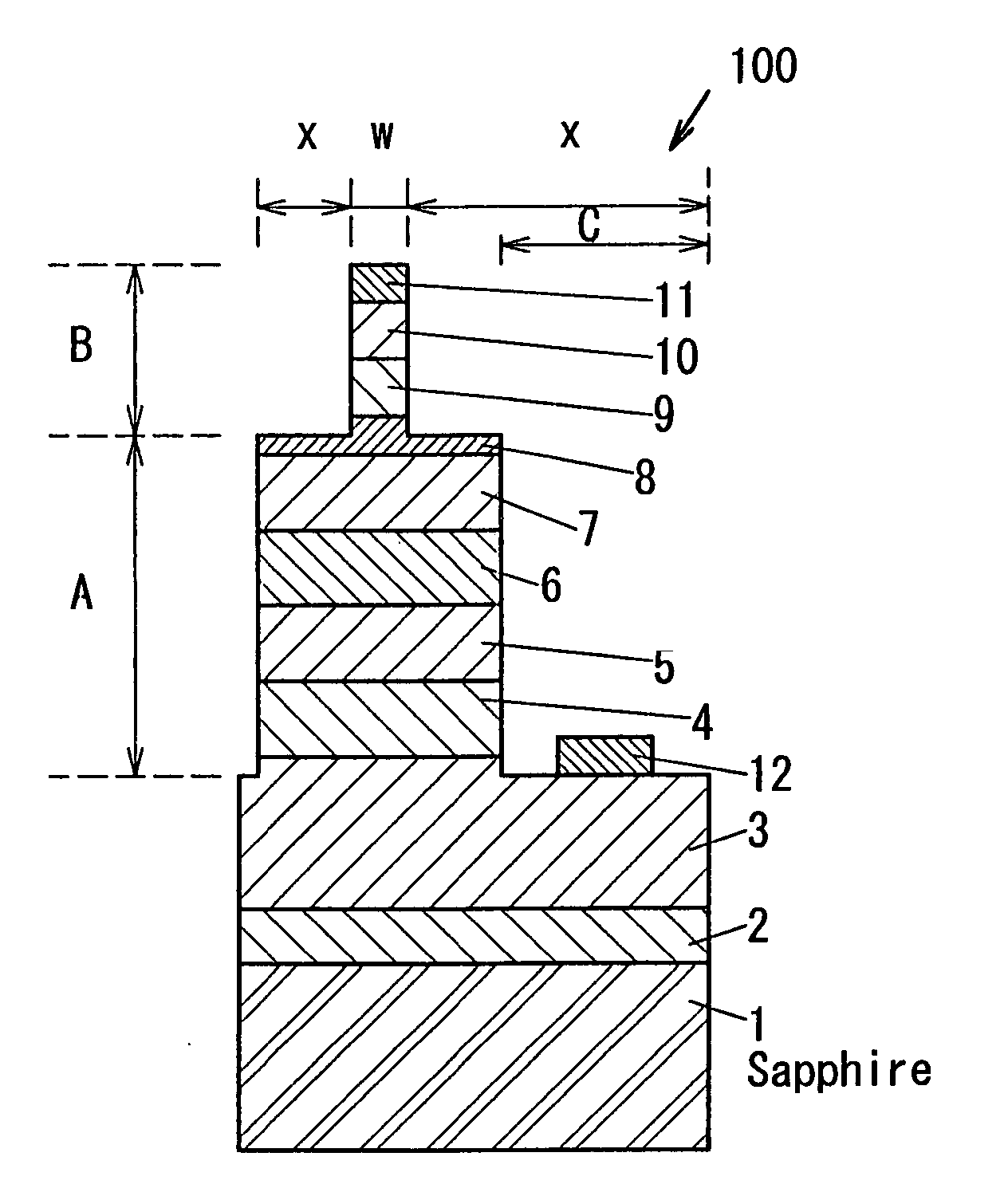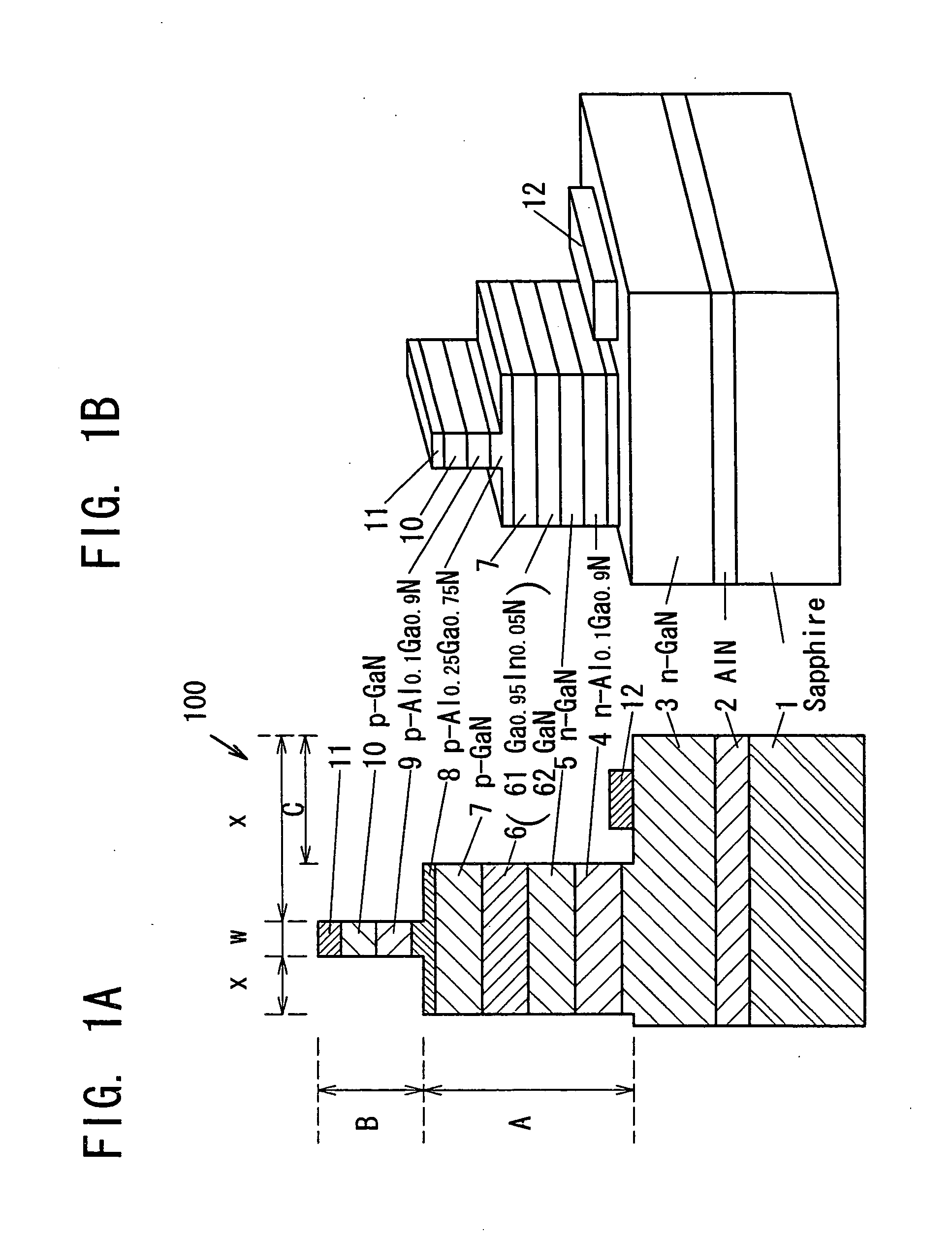Group III nitride compound semiconductor laser
a semiconductor laser and nitride technology, applied in the direction of lasers, semiconductor devices, semiconductor lasers, etc., can solve the problems of not being easy for all the semiconductor lasers, and achieve the effect of easy control of the thickness of the cladding layer and easy manufacturing process
- Summary
- Abstract
- Description
- Claims
- Application Information
AI Technical Summary
Benefits of technology
Problems solved by technology
Method used
Image
Examples
Embodiment Construction
[0026] The present invention will next be described in detail with reference to embodiments, which should not be construed as limiting the invention thereto.
[0027]FIG. 1A illustrates a sectional view of a semiconductor laser 100. FIG. 1B illustrates a view showing a structure of the semiconductor laser 100.
[0028] The semiconductor laser 100 has a sapphire substrate 1, and an AlN buffer layer 2 having a thickness of 50 nm is formed on the substrate 1. Alternatively, the buffer layer 2 can be made of GaN, GaInN or AlGaN. On the buffer layer 2, the following layers are formed consecutively: about 4.0 μm in thickness of silicon (Si) doped gallium nitride (GaN) n-layer 3, having an electron concentration of 1×1018 / cm−3; 500 nm in thickness of Si-doped Al0.1Ga0.9N n-cladding layer 4, having an electron concentration of 1×1018 / cm−3; 100 nm in thickness of Si-doped GaN n-guide layer 5, having an electron concentration of 1×1018 / cm−3; and an active layer 6 having multiple quantum well (MQW...
PUM
 Login to View More
Login to View More Abstract
Description
Claims
Application Information
 Login to View More
Login to View More - R&D
- Intellectual Property
- Life Sciences
- Materials
- Tech Scout
- Unparalleled Data Quality
- Higher Quality Content
- 60% Fewer Hallucinations
Browse by: Latest US Patents, China's latest patents, Technical Efficacy Thesaurus, Application Domain, Technology Topic, Popular Technical Reports.
© 2025 PatSnap. All rights reserved.Legal|Privacy policy|Modern Slavery Act Transparency Statement|Sitemap|About US| Contact US: help@patsnap.com



